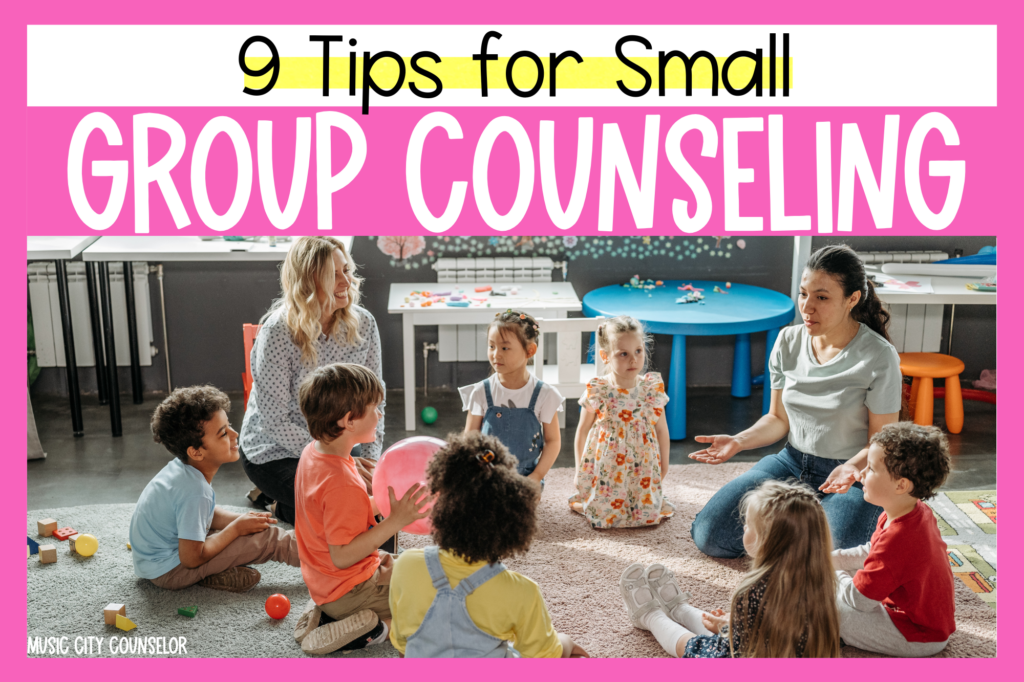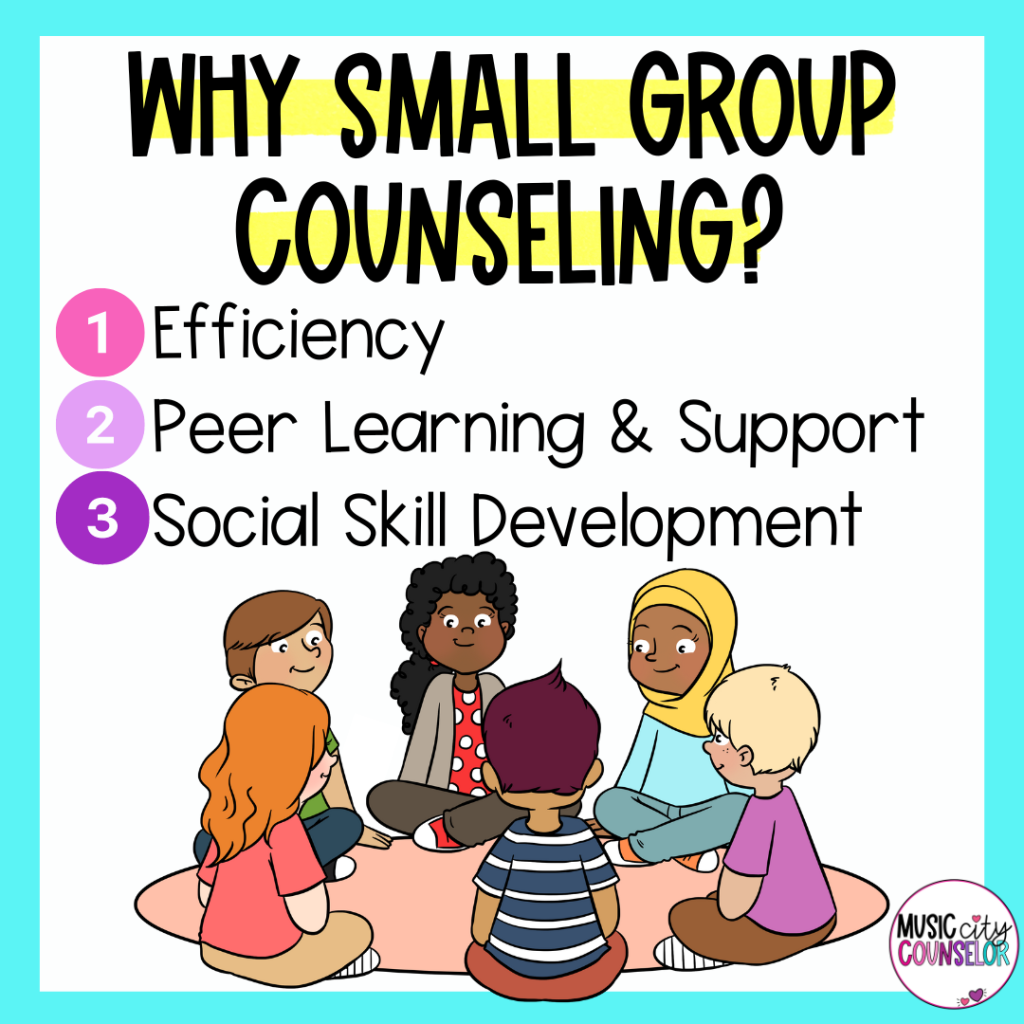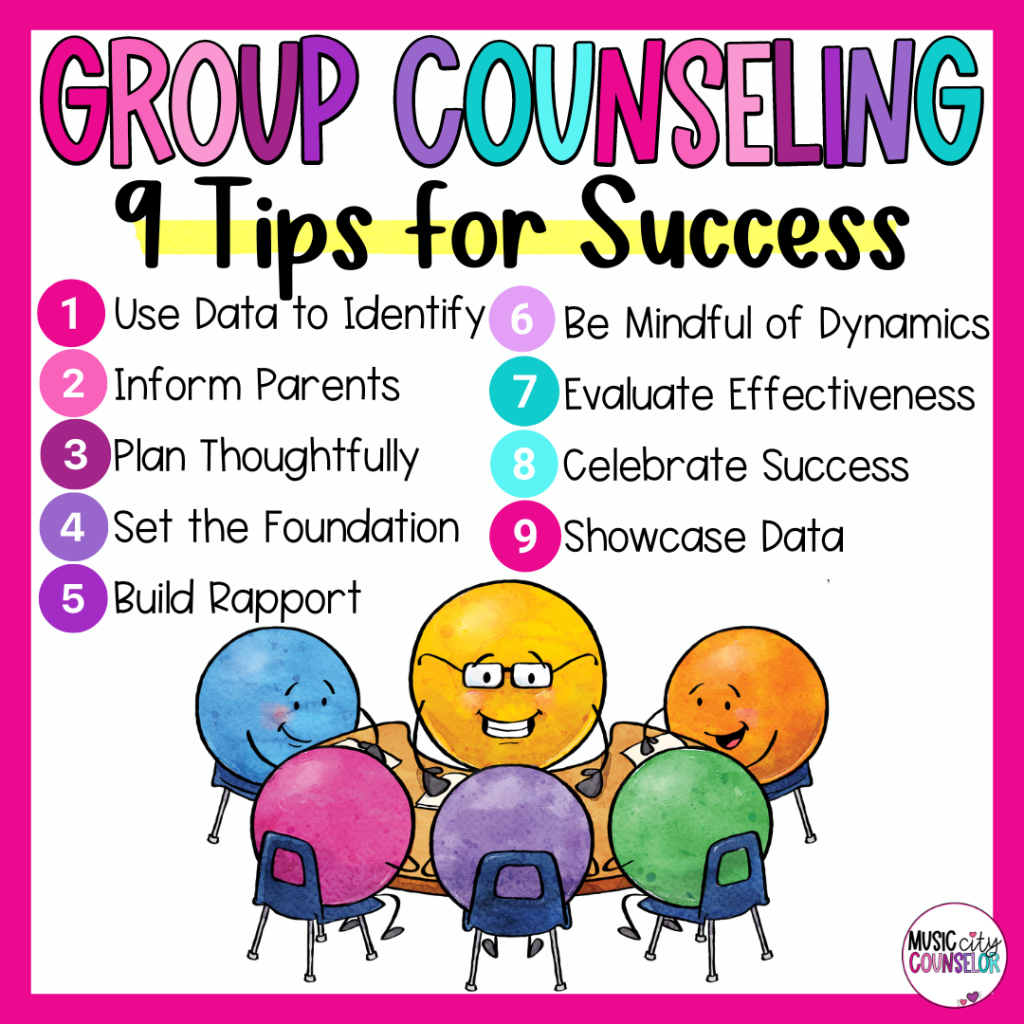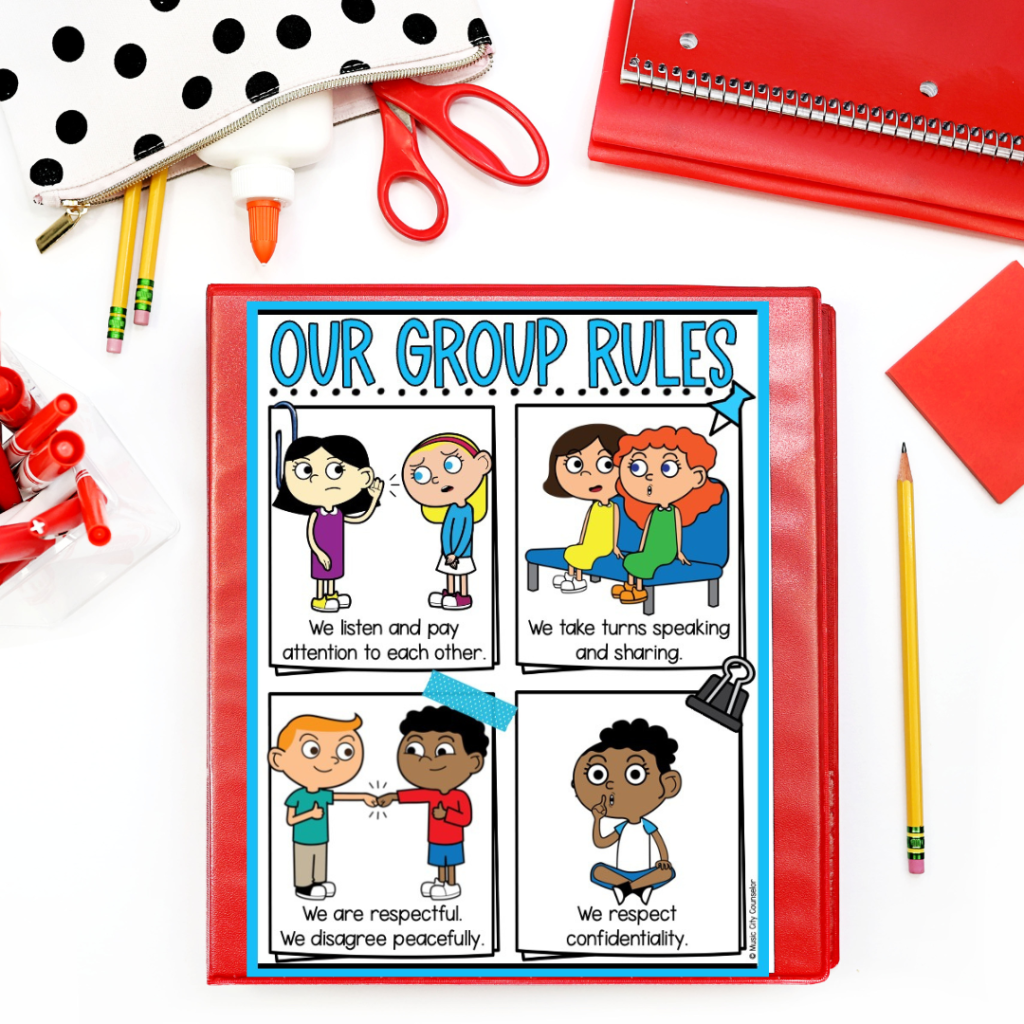
Hey y’all! Thanks so much for stopping by. My name is Laura and I am an Elementary School Counselor turned Curriculum Writer. At my precious school in Nashville, TN, 97% of my students were living in …

School counselors, does the thought of facilitating small groups make you feel weak in the knees? Do you feel lost on where to start, how to select students, how many sessions to plan, which curriculum to use, how to evaluate data, and the list goes on? I got you, boo!
Let’s dive into 9 tips to run smooth and effective counseling small groups with elementary students, and get you started as soon as this week!

Let’s take a minute to remember why small group counseling is so beneficial:
First and foremost, small groups are beneficial because they are efficient! As much as you’d like to offer consistent individual support to all of your students, you just don’t have the time or capacity to do so. Small groups let you see multiple students at once, while also offering more tailored support than classroom lessons can allow.
In group, students don’t just benefit from your guidance as the school counselor, but also from shared experiences and insights from their peers. Support and encouragement from peers, as well as modeling positive behaviors, are powerful tools for motivation and growth!
Group counseling also provides a natural setting for students to practice and grow their social skills. Interacting with peers in a controlled environment allows them to grow their communication, teamwork, and conflict resolution skills.

Start by analyzing your needs assessment data to determine which group topics are most needed by your student population.
Next, comb through school-wide data such as attendance records, discipline reports, and standardized testing scores to choose the students who would most benefit from group. Then, take parent, teacher, and admin referrals, as well as student self-referrals, into account when selecting students.
This targeted approach ensures that your small groups are data-driven and address the specific needs of your students.
Choose no more than 8 students for your small group. The number of participants depends on the age of your students and the topic at hand. For behavior-based small groups with lower elementary students, 3-5 students is ideal. On the other hand, for a friendship small group with 4th graders, 8 students may be appropriate.
Communication with parents is key to the success of small group counseling! Whether or not your state or district requires parent permission, sending a letter home in the student’s native language is best practice.
Include details like:
This not only keeps parents informed, but also establishes a collaborative partnership between you and the parents!
Plan for 6-12 sessions, depending on the age of your students and topic of the group. Incorporate elements of play, creativity, story books, technology, and movement to keep young children engaged.
Check out research-based resources like my Anger Small Group Curriculum and Anxiety Small Group Curriculum to take planning off your plate!
Begin your small group by establishing a strong foundation. Start with an icebreaker to ease students into the group setting. Take time to explain the importance of confidentiality, and give students a summary of what they will be learning.
Also, collaborate with students to create group rules. By involving them in rule creation, you empower them to take ownership of the group and adherence to the rules is more likely to happen.

* Find these helpful, kid-friendly documents in my Coping with Anger Small Group Curriculum!
Not only is it important to build a strong foundation for your group, it’s also vital to build rapport and trust with your students. As you invest in creating a safe and supportive learning environment, students will feel comfortable expressing themselves.
Rapport and trust are absolutely critical to a successful counseling group!
Be aware of group dynamics throughout your small group sessions. If conflicts or disruptions occur, address them promptly to encourage positive interactions between small group members. Foster an atmosphere where students feel heard and respected.
Flexibility is key— regularly evaluate student progress and make adjustments as needed.
Administer pretests and posttests to gauge the effectiveness of each small group. Regularly evaluate the sessions to identify areas that might need extra attention or changes. Ask students, teachers, and caregivers for feedback, too.
Always be flexible! Consider whether or not you need to add any additional sessions or make adjustments to future lessons you have planned.
Above all, recognize and celebrate the achievements of your students. Help students reflect on what they’ve learned and how their participation in group has made a positive impact on their lives.
Consider awarding certificates or organizing a small celebration at the end of the group— popcorn or pizza parties are always a hit!

Once your group is complete, shout your worth from the rooftops! Complete a Small Group Counseling Report and send it to stakeholders. Share your group goals, session topics, participants, pretest/posttest data, and more. Educate your school community about the impact and value of your services, encourage school-wide buy-in for your services, and advocate for your position!
While individual and classroom lessons have their roles, small group counseling offers a unique and effective approach to addressing a diverse set of needs in your elementary school. Be confident that you can provide high-quality and effective guidance to benefit all of your students– because you can!

| Cookie | Duration | Description |
|---|---|---|
| cookielawinfo-checkbox-analytics | 11 months | This cookie is set by GDPR Cookie Consent plugin. The cookie is used to store the user consent for the cookies in the category "Analytics". |
| cookielawinfo-checkbox-functional | 11 months | The cookie is set by GDPR cookie consent to record the user consent for the cookies in the category "Functional". |
| cookielawinfo-checkbox-necessary | 11 months | This cookie is set by GDPR Cookie Consent plugin. The cookies is used to store the user consent for the cookies in the category "Necessary". |
| cookielawinfo-checkbox-others | 11 months | This cookie is set by GDPR Cookie Consent plugin. The cookie is used to store the user consent for the cookies in the category "Other. |
| cookielawinfo-checkbox-performance | 11 months | This cookie is set by GDPR Cookie Consent plugin. The cookie is used to store the user consent for the cookies in the category "Performance". |
| viewed_cookie_policy | 11 months | The cookie is set by the GDPR Cookie Consent plugin and is used to store whether or not user has consented to the use of cookies. It does not store any personal data. |